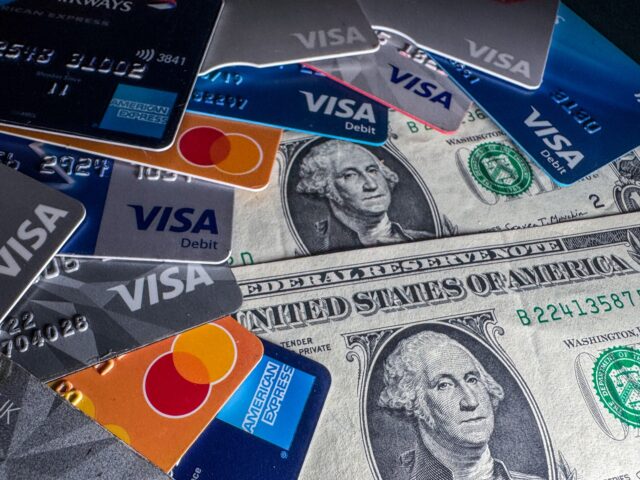This goes back to credit card reform for late fees and overbalance fees, which effectively was used as an excuse to severely hike interest rates allowing the greedy banks to make even more money off of you. Once you’re carrying a significant balance, you’re hardly ever knocking down principal and effectively giving away income to the banks. Consequently, I pay my balance off monthly and just use my credit card for online purchases, car rentals… which provides security insulation, insurance benefits, and they give me a kickback of the fees they take from the vendor, and I never pay a dime of interest. If you are carrying too much credit card debt and falling behind, there are non-profits that will negotiate settlements, cessation of interest, and administer repayment for a nominal fee. You’ll lose the credit accounts, but you can significantly improve your financial situation and pay off the debt much sooner.
By Sean Moran

American credit card defaults have risen to the highest levels since the aftermath of the 2008 financial crisis as consumers grapple with years of high inflation.
Credit card lenders wrote off $46 billion in delinquent loan balances in the first three quarters of 2024, a 50 percent increase from the same period last year. These forms of write-offs are are viewed as a highly monitored measure of loan distress.
This is the highest level since 2010, according to industry data gathered by BankRegData.
Mark Zandi, the head of Moody’s Analytics, said, “High-income households are fine, but the bottom third of US consumers are tapped out. Their savings rate right now is zero.”
The Financial Times wrote that, although banks do not have data for the fourth quarter, there are worrying signs about the state of the American consumer:
The sharp rise in defaults is a sign of how consumers’ personal finances are becoming increasingly stretched after years of high inflation, and as the Federal Reserve has left borrowing costs at elevated levels.
Banks have yet to report their fourth-quarter numbers but the early signs are that more consumers are falling significantly behind on what they owe. Capital One, the US’s third-largest credit card lender, after JPMorgan Chase and Citigroup, recently said that as of November its annualised credit card write-off rate, which is the percentage of its overall loans that are marked as unrecoverable, hit 6.1 per cent, up from 5.2 per cent a year ago.
Odysseas Papadimitriou, the head of consumer credit research firm WalletHub, said, “Consumer spending power has been diminished.”
Americans left the coronavirus pandemic with large balances of cash, buttressed by high levels of stimulus spending; however, credit card balances started to soar in 2022 and 2023. The spike in American consumer spending, along with supply chain shocks and excessive levels of spending under President Joe Biden, led to high inflation.
In response, the Federal Reserve raised interest rates, thus boosting credit card rates and other borrowing costs. Higher loan balances and interest rates pushed Americans to pay $170 billion in interest in the year prior from September 2024.
Many Americans have remained hopeful that the Federal Reserve would slash interest rates, and lower borrowing costs as a result; however, the Fed has forecast that the nation’s central bank may only reduce interest rates by half a percentage point in 2025.
“Delinquencies are pointing to more pain ahead,” Papadimitriou remarked.